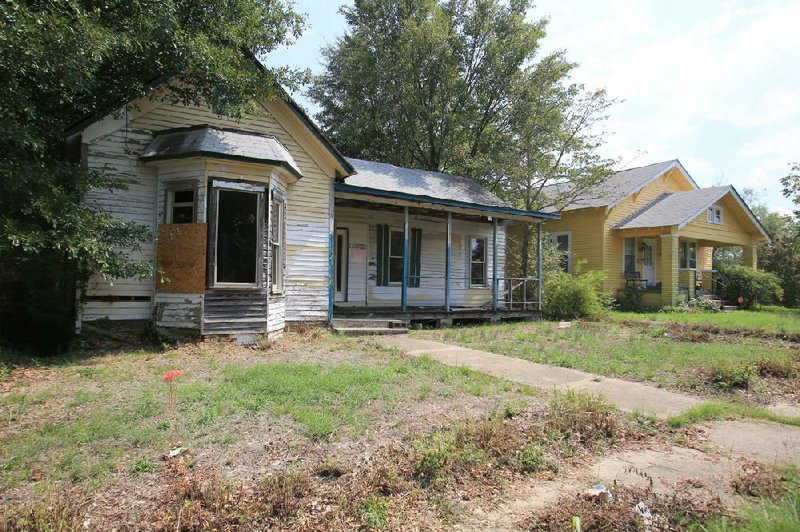LITTLE ROCK — Urban infill - new construction in older neighborhoods - comes in various shapes and sizes, explains George Wittenberg, former director of the Urban Studies and Design program at the University of Arkansas at Little Rock.
“The [Little Rock] River Market condos are all infill properties,” says Wittenberg, who is now retired.
In the greater Little Rock area, urban infill - new construction in older neighborhoods - is also occurring in the Central High School neighborhood and in North Little Rock’s historic Argenta district, Wittenberg says. New construction can also be seen in Little Rock’s Capitol View neighborhood near downtown.
“The problem I’ve had with it in the past is that it’s been difficult to do this in a way that makes the new housing affordable and draws a wide mix of people from different income levels,” he says. “But these houses in Pettaway Park are more affordable.”
OPPOSITES ATTRACT
What’s the attraction of a contemporary house in an older neighborhood?
“People are attracted to something different,” Wittenberg says. “Especially when a modern design makes the space attractive to the resident’s needs and the cost is affordable.”
And it’s not just a trend but a changing way of life, says Stephen Luoni, director of the University of Arkansas Community Design Center in Fayetteville. The center, an outreach program of the UA’s School of Architecture, works to advance creative development around the state through education, research and design solutions that enhance the physical environment. The infill in Pettaway Park is among the projects on which the center has worked.
“People want to be downtown,” he says. “What you’re seeing is a major market shift in demographics in which this nation is moving away from the suburban lifestyle.” And he says it’s not just about the higher cost of fuel.
“It goes way beyond gas prices,” Luoni says, adding that it’s not just very young adults who want to return to downtown.
“Young professionals without children and empty nesters are the two biggest markets for downtown living. The Urban Land Institute estimates that 25 percent of future housing demands will be for urban housing served by public transportation and that 22 million large format suburban homes in the U.S. will be abandoned because there will be no market for them,” he says.
“The problem is developing enough urban housing to keep up with the demand for it,” Luoni says, adding that sometimes urban infill can cost more.
“The developers save on infrastructure, but mixed use - condos with a restaurant on the ground floor - can be more expensive because it’s more complex. With a commercial development, you have to have a higher grade of construction, and the building codes can be tricky.”
FAYETTEVILLE IS FEELING IT, TOO
In Fayetteville the demand for downtown living is strong, having rapidly grown since about 2003, says Luoni, who lives downtown near his work and the UA campus. He thinks even more people would live downtown if they could afford to do so.
“Downtown condo prices are expensive here, running $300 to $500 per square foot,” he says.
HomeStyle, Pages 42 on 10/13/2012
